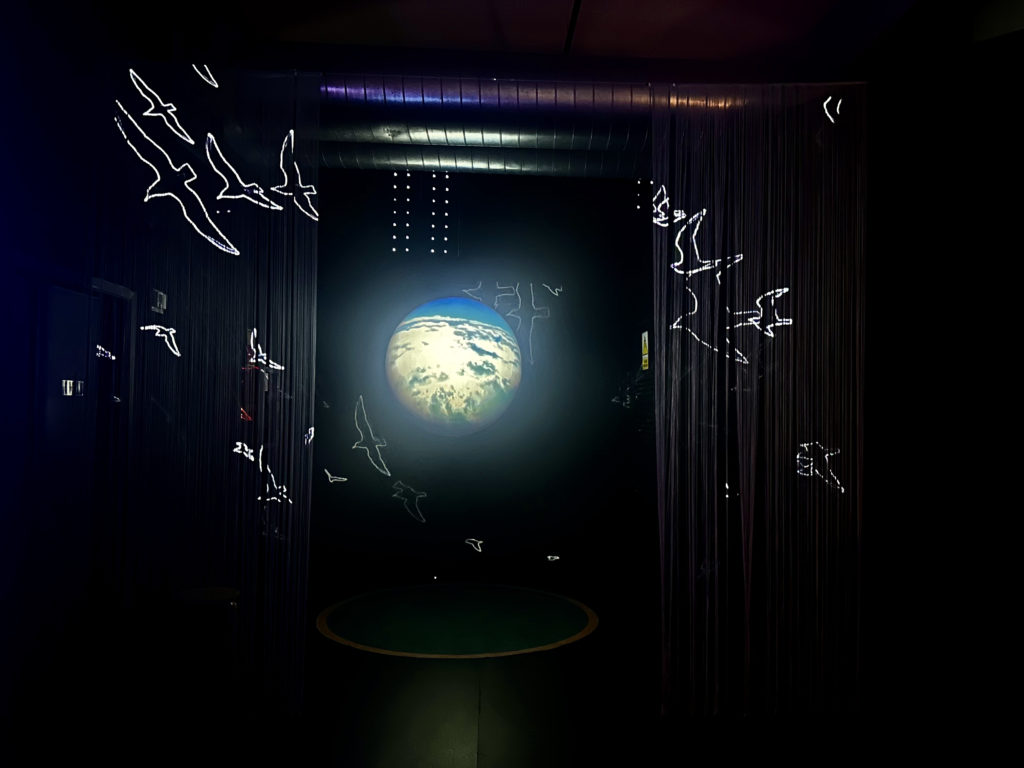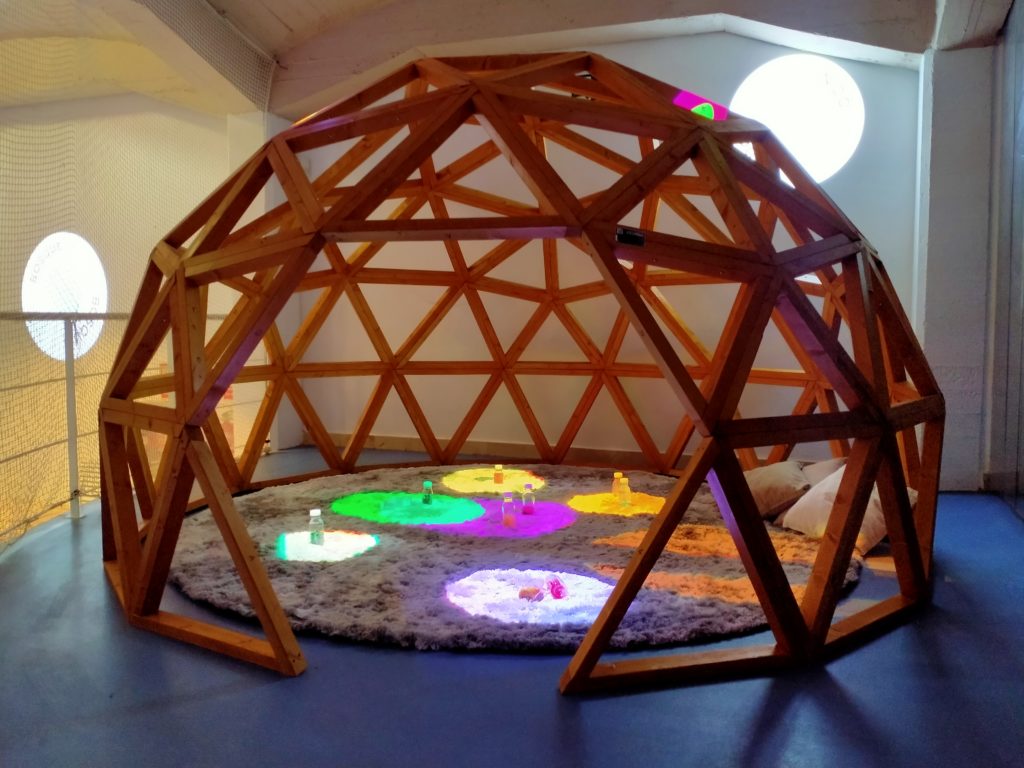Science and Water Museum, Spain

In July 2022, under the new guidance of the Science and Water Museum, which belongs to the Department for Culture and Identity of the Murcia City Council, we recognized the need to remodel the museum’s children’s room, dating from the late 1990s, with the aim of aligning it with our current pedagogical and environmental objectives, as well as those of the 2030 Agenda. We considered essential for this space, designed for children between 2 and 7 years old and their families, to incorporate fundamental principles such as sustainability, accessibility, inclusion, experimentation, beauty, and dignity for childhood, respecting their natural way of learning: through play. Our approach was based on the intersection of design, art, science, and pedagogy, using artistic integration strategies, all within the framework of the STEAM methodology.
To bring this vision to life, the museum’s technical team joined forces with a diverse group of professionals. Among them were: Onírica Mecánica, a performing arts company that explores the relationship between humans, nature, and technology; Circúbica, a company specializing in childhood and environment, with expertise in creating recreational spaces by transforming industrial waste into gaming elements; and Createctura, experts in ecological architectural design applied to educational spaces. We embraced the circular economy as a fundamental pillar, selecting recycled and sustainable materials that would stimulate the senses and provoke personal reflection.
In pursuit of our goal of promoting science in an intuitive and playful way, we conceived a space called Descubre H2O, focused on themes related to water, natural elements, and light. It offers recreational proposals that convey science in an exciting and meaningful way, without the use of screens. The materials chosen for the room enhance learning, foster scientific and divergent thinking, creativity, self-esteem, and autonomy in the children who visit us.
The intervention encompassed the entire space, unifying color palettes and materials in the general finishes to create a harmonious and aesthetic environment, to which the comfortable acoustic and lighting design makes a significant contribution. The layout of the space was carefully designed to consider its use, the circulation and needs of users, reducing inequalities and transforming it into a more inclusive place. Since its opening, we have verified that the Descubre H2O project has a very positive impact on the different social actors involved:
- Throughout sessions with students from educational centres, we have observed high levels of concentration and motivation towards the room’s proposals, which are highly appreciated by educational practitioners.
- Local community. The room is designed to facilitate coexistence between families, and we have noticed that both adults and children play together in a calm and welcoming environment. Children with disabilities enjoy the space like any other.
- Scientists, university students, and administration. They positively value the proposal, giving rise to new research work on the effectiveness of the methodology used.
The Descubre H2O project, therefore, has not only transformed the space but also reaffirmed our commitment to art, science, inclusive education, sustainability, and respect for childhood.
